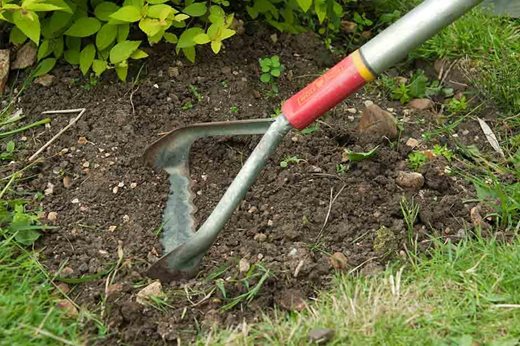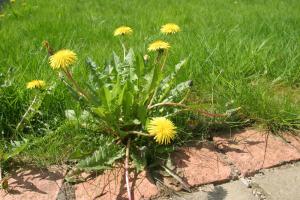 “Don’t be weedy” was a favourite shout of one of my PE teachers. Humiliation, rather than motivation, was his style. His exhortation is one I’m always reminded of when on the plot at this time of year. Weeds may just be ‘flowers in the wrong place’, but lush weed growth in late spring can rapidly overwhelm a plot. Keeping on top of the weeds is a must, but it doesn’t always have to be a battle. There are several ways of making weed control easier.
“Don’t be weedy” was a favourite shout of one of my PE teachers. Humiliation, rather than motivation, was his style. His exhortation is one I’m always reminded of when on the plot at this time of year. Weeds may just be ‘flowers in the wrong place’, but lush weed growth in late spring can rapidly overwhelm a plot. Keeping on top of the weeds is a must, but it doesn’t always have to be a battle. There are several ways of making weed control easier.
When considering weed control it’s worth remembering that there are really two types of weed, perennial and annual. Perennials are those that live for several years or more and generally grow from roots in the soil. Examples include bindweed, ground elder, couch grass, buttercup and dock. Annual weeds are those that mainly sprout and die in one growing season. Examples include chickweed, groundsel, fat hen and goose grass.
Weeding them out
There are several ways to control weeds: sometimes neatly categorised as chemical, physical and cultural. The chemical, or weed killer method, is one I never use and all organic gardeners should avoid. Physical is the manual destruction of weeds by tool or hand. This can be by forking out, gentle hoeing or, in desperation, yanking. Cultural is the more sophisticated method and the one requiring least effort.
Perennial weeds are the most difficult to control. The easiest long term ‘cultural’ method is suppression by mulching. For this to be effective the mulch material used must be durable, impenetrable by weed roots, exclude light and, most importantly, stay in place for an entire growing season. To clear perennial weeds on new ground I put down thick black plastic sheeting, the type used by farmers to cover silage clamps, in spring. By late autumn most perennial weeds will have died out. The downside is that the ground can’t easily be used for growing while the sheeting is in place, although you can cut holes and plant crops such as courgettes or pumpkins that aren’t so easily choked by the weeds that will also poke through.
Stale mate
Another simple cultural method good for annual weeds is the so-called ‘stale’ seedbed. This involves preparing ground about two weeks before sowing a crop. Tilling the soil leads to a flush of weeds from seed newly brought close to the surface. Just before the crop is sown these seedling weeds are destroyed by very shallow hoeing or raking. This enables the crop to germinate and grow away with reduced competition and less need for fiddly weeding of the baby plants. This method is particularly useful for tiny seedlings vulnerable to smothering such as carrots.
When it comes to physical weed control, hoeing will help keep all but the most persistent and deep rooted perennial weeds in check. Unless you’re a dab hand at wielding the hoe it’s usually also necessary to get down and remove weed seedlings nestling next to the crop by hand. However you do it, regular weeding in late spring and early summer is the best way to control weeds, especially annuals that will readily seed if allowed to grow. If you don’t want to be permanently weedy remember that old gardening adage: “one year’s seeding is seven years weeding”.












Add a comment